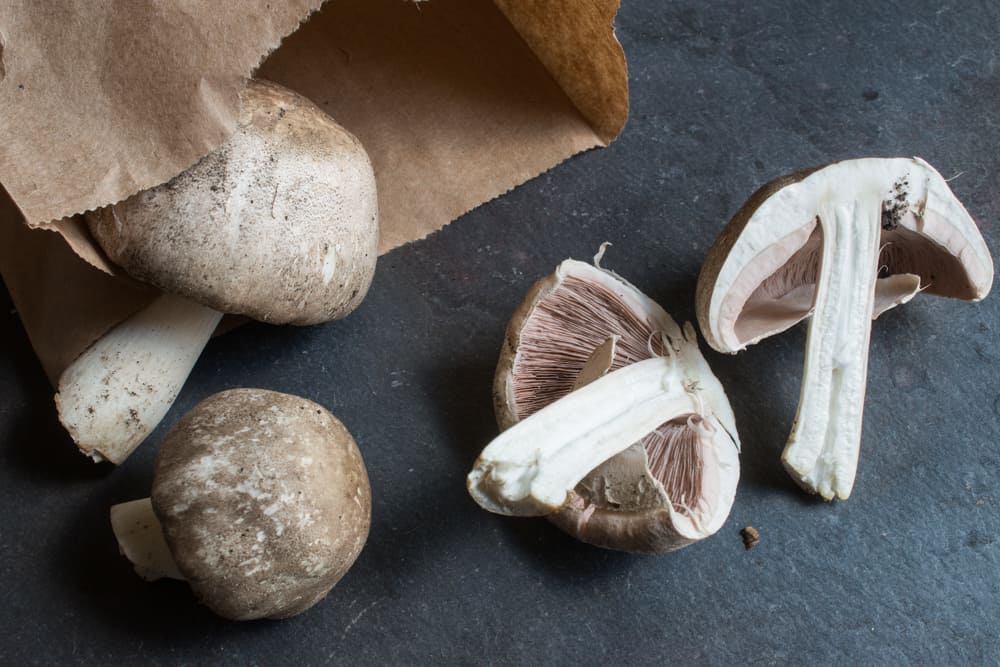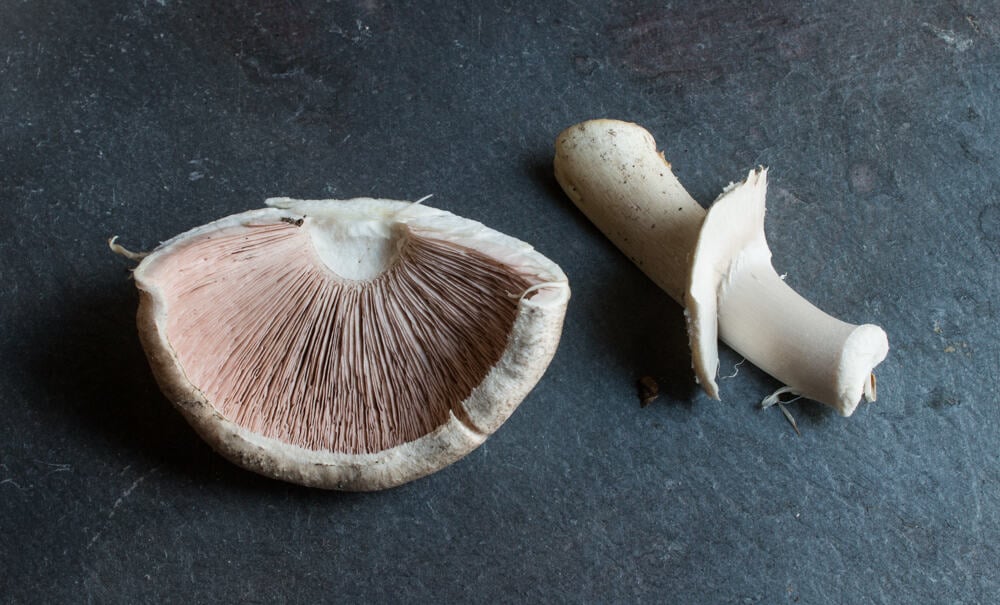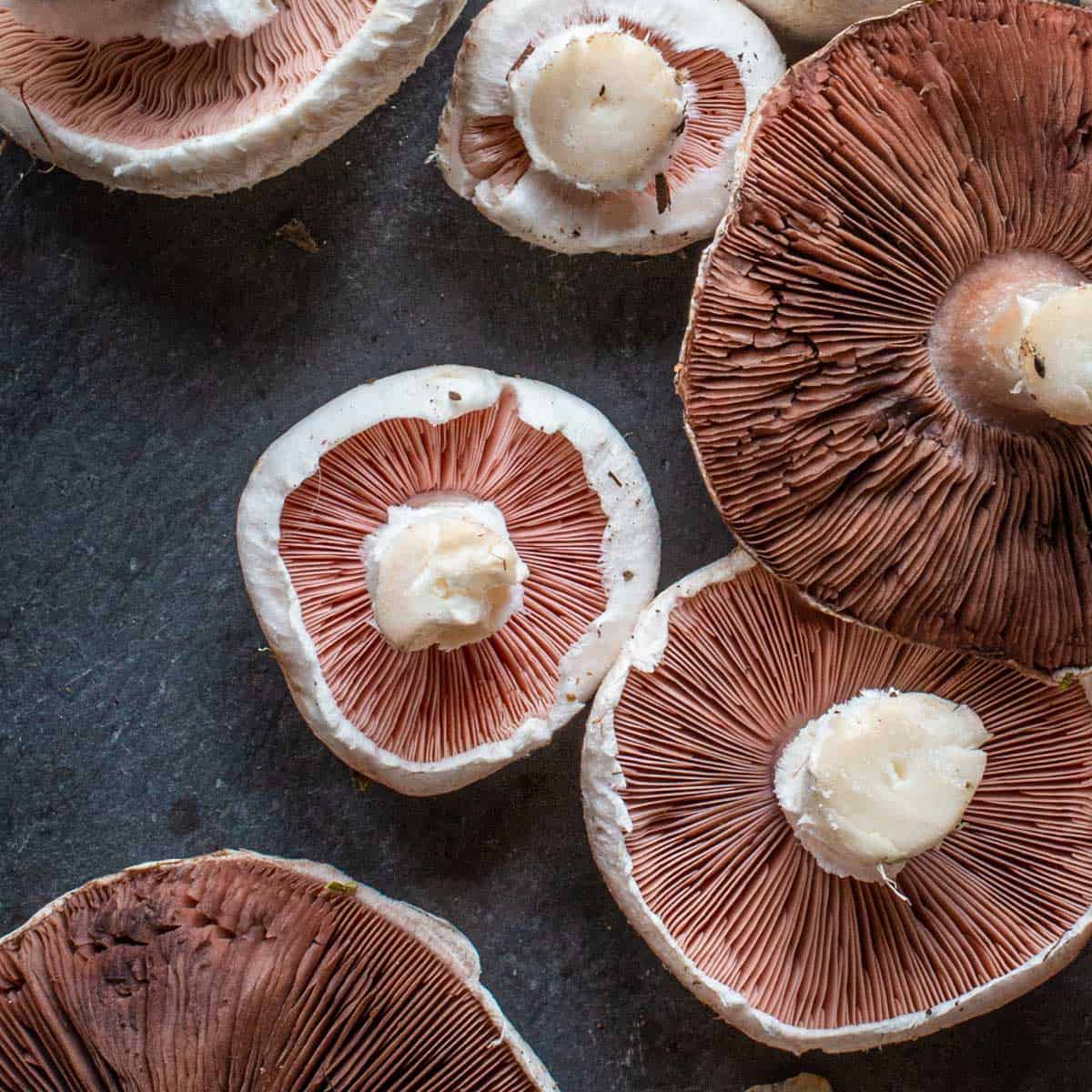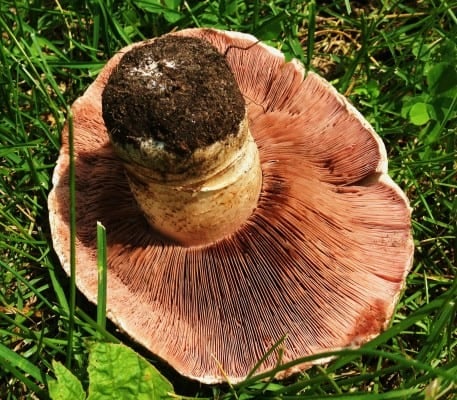Agaricus Campestris, also known as the meadow mushroom is the same species as white button, portobello and cremini (baby bellas). The wild ones taste better though. In this post I'll show you how to correctly identify, harvest and cook them. They're an intermediate-level mushroom for foragers.

In my experience, this isn't a mushroom that you will really hunt for, I tend to just see them around randomly. They start to fruit in the early Summer, and like open places like fields, yards, and forest edges.
When you do find some though you're likely to find a bunch. After you find a place where they grow you can come back days after you picked the first ones, and probably find some more. The next year around the same time too, you can be pretty sure of them coming up again around the same area.
Cooking
Cooking wise, these are a great, all around mushroom. They're closely related to the button mushrooms in the supermarket and taste similar, but I'd say more mushroomy.
If you want to preserve them, you have a couple options. These can be dried, sauteed in butter and frozen, or pickled in a recipe for conserve like I posted here. Making powder from them to make broth and seasonings is also a good choice if they had bug damage, which is common with these.
Just make sure that you don't freeze them raw, aside from taking up too much fridge space, mushrooms get damaged by the freezer if they're not cooked first. Even after cooking freezing and then thawing, they're still not the same as if they were fresh.

Identification and Look a Likes
In order to harvest these, you must be able to identify Yellow staining Agaricus xanthodermis. Xanthodermis will make you sick, and also have pink gills which can be confusing. They're also a common mushroom in yards, and I see them more often than the true, edible variety.

Here's some general information and tips that should help you avoid bad guys, the most important things to notice are their smell and if they discolor when cut:
- Cut the stem of the mushroom, then wait 15 minutes. if the cut stains yellow, throw it out!
- Put the underside of the mushrooms cap close to your nose and smell it deeply. Is it mushroomy and good smelling? Great. Does it smell like embalming fluid? Bad.
- There will be a ring right around the middle of the stem.
- Pay close attention to the size of the mushrooms, if there are some that are young and older growing together, make note of their sizes throughout their life span. These mushrooms are usually large, like portobellos from your grocery store when mature, when small, they will be about the size of a cultivated white button.

Recipes
Recipes where these could be used and or substituted

John Hampton
The only fail safe method of identification is a spore print. Use a white sheet of paper and place the cap gill side down on the paper. Cover the cap with a glass or small mason jar. Leave it sit for a couple hours. Remove the jar and the cap (still useable) and look at the deposited spores on the paper. Any other color than chocolate brown discard. This method has saved me in over 50 years of mushroom gathering.
Alan Bergo
Sorry to burst your bubble, but many other Agaricus, including the poisonous Xanthodermati also have brown spore prints. There are no hard and fast rules with mushrooming.
Nancy Addison
When I was a kid (77yo now) My mom used to take my sisters and I hunting for these mushrooms and for puffballs. She knew how to tell the safe ones from the bad ones and we never got sick but also got enamored of these meadow mushrooms. Mom dried them and used the powder in stews and soups when no fresh ones were available. They made a huge difference to her cooking. As an adult I got a job in the Philippines and mom sent me off with a whole jar of dried meadow mushroom powder because I would be gone for 2 years. That was a kindness I'll never forget!
Alan Bergo
Thanks for sharing Nancy. That's really sweet.
Sara
What a lovely story! Thank you so much for sharing.
Dina Tsirelson
It would be really helpful if you mentioned the bad lookalike species, so I could look them up and read more about them to be more confident of my ID. Eg. Which mushroom does the yellow stain rule out? Which smells like embalming fluid?
James I
I just found some growing next to my mom’s day lilies, had the pink gills, but they smelled like embalming fluid and they turned yellow when I cut the stem….
Did I just find them too late?
Or is it a sickness of the fungus itself that causes the mushrooms to go bad? Wondering for future harvests.
Alan Bergo
Yellow staining Agaricus are not to be eaten, you'll want to discard those.
Cori
The ones that smell bad and turn yellow when cut are a completely different and toxic mushroom, not just an old or bad agaricus campestris.
lwhy
Thanks for sharing your thoughts about agaricus campestris.
Regards